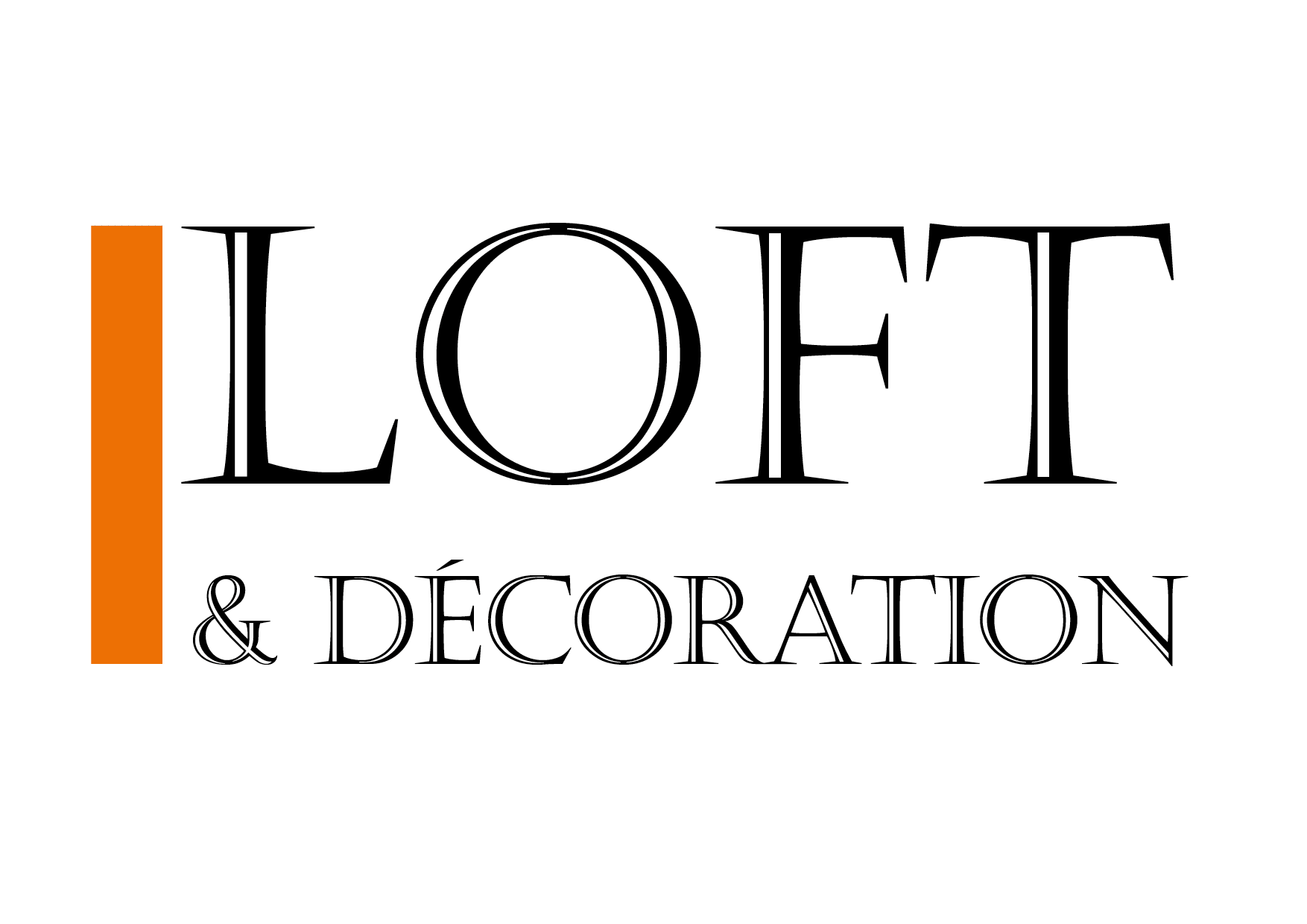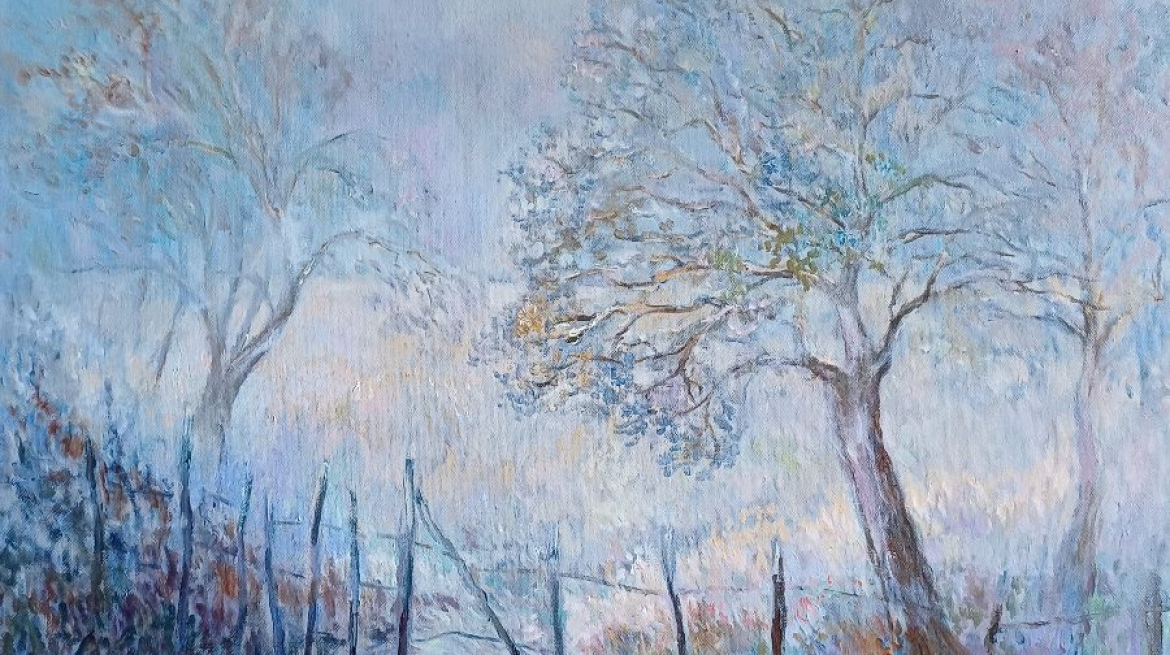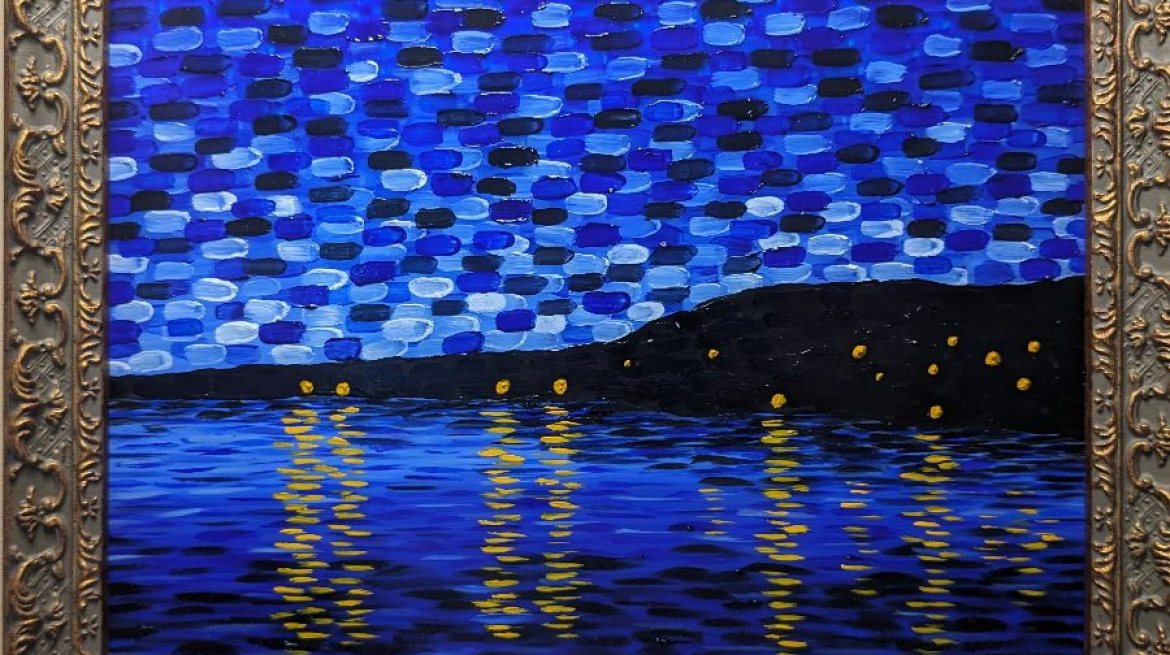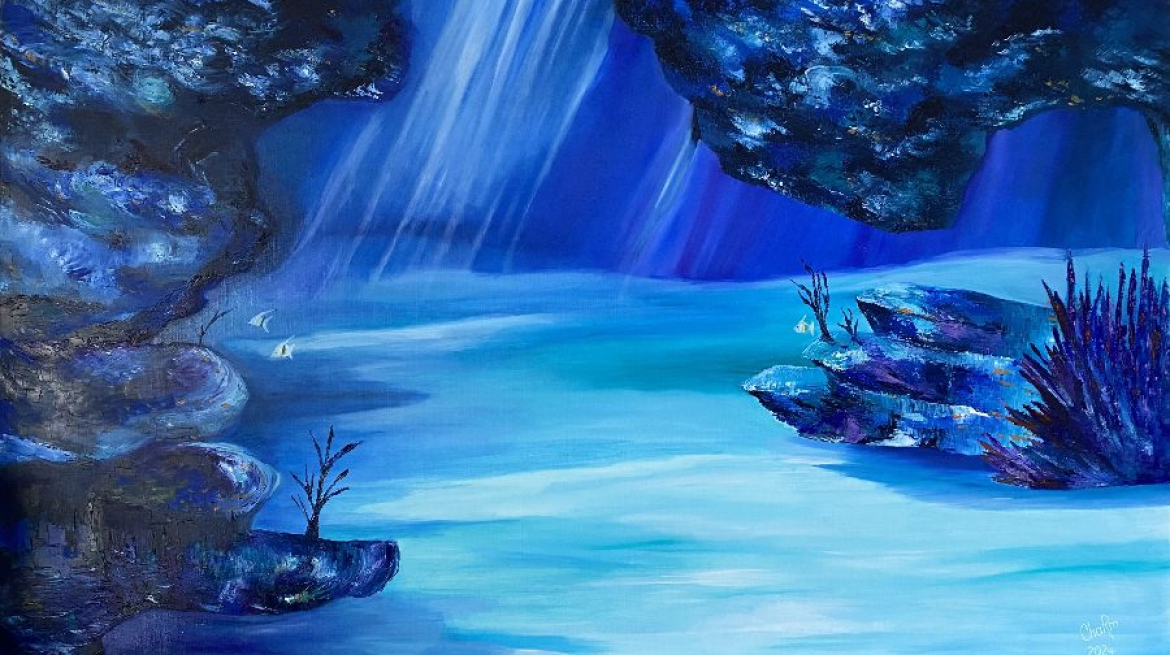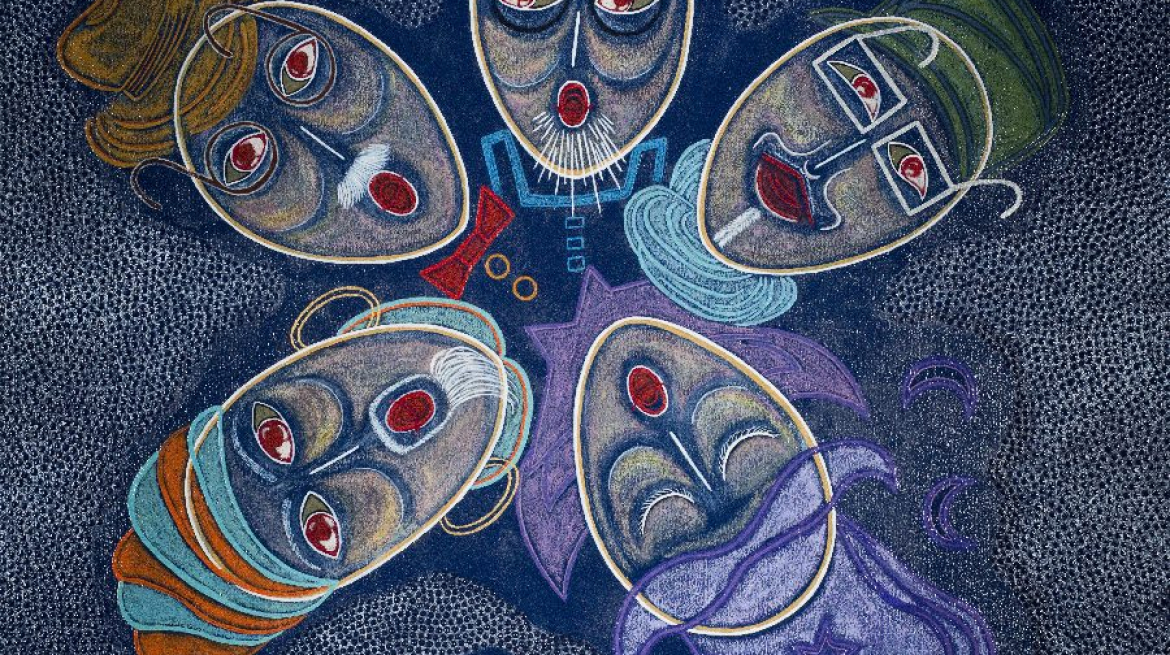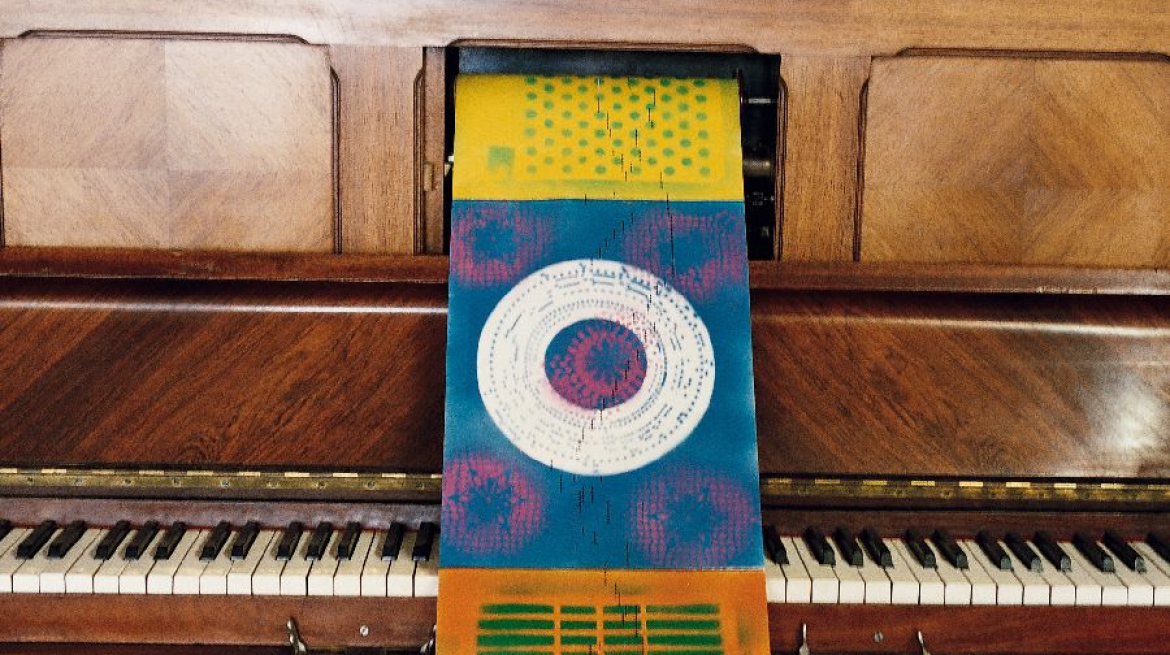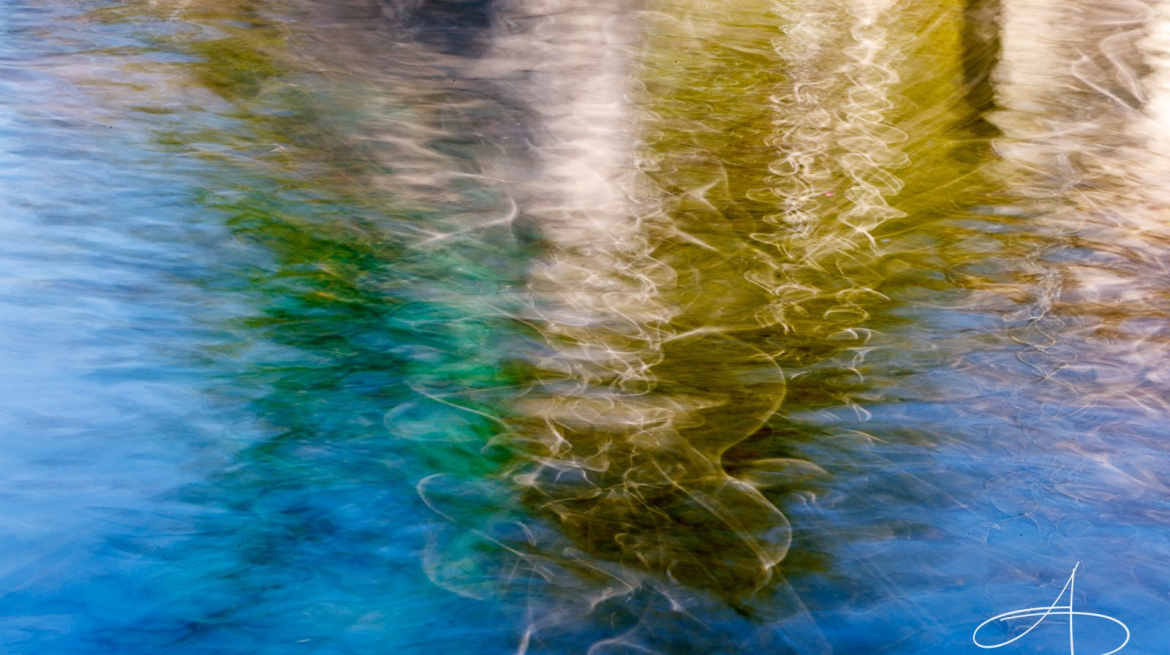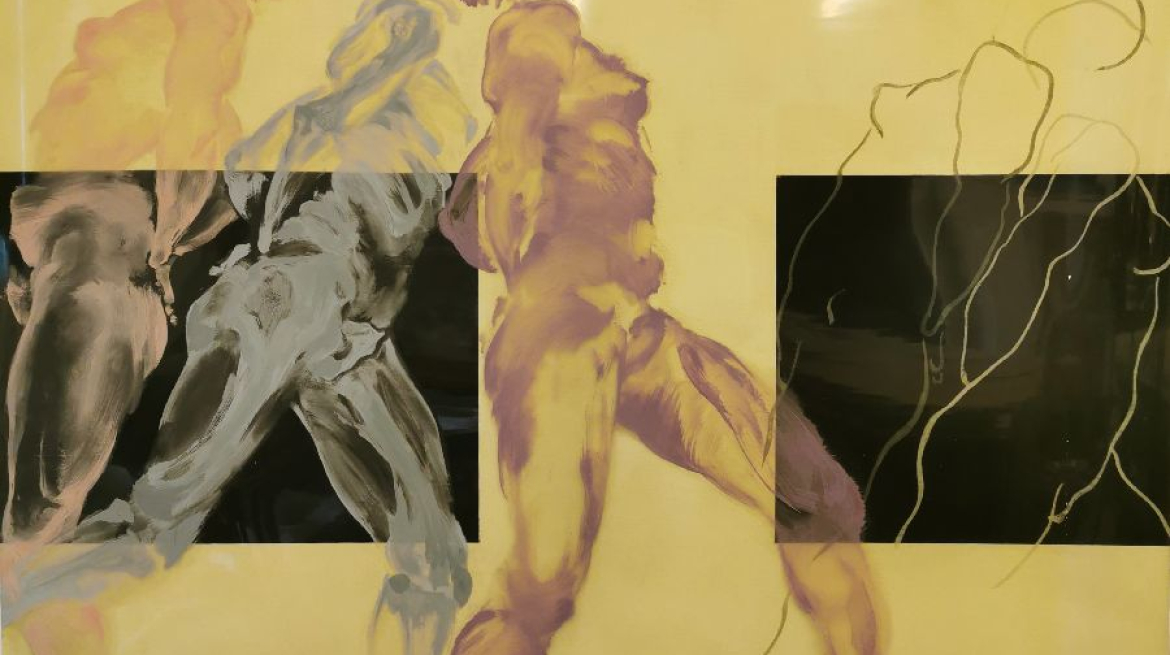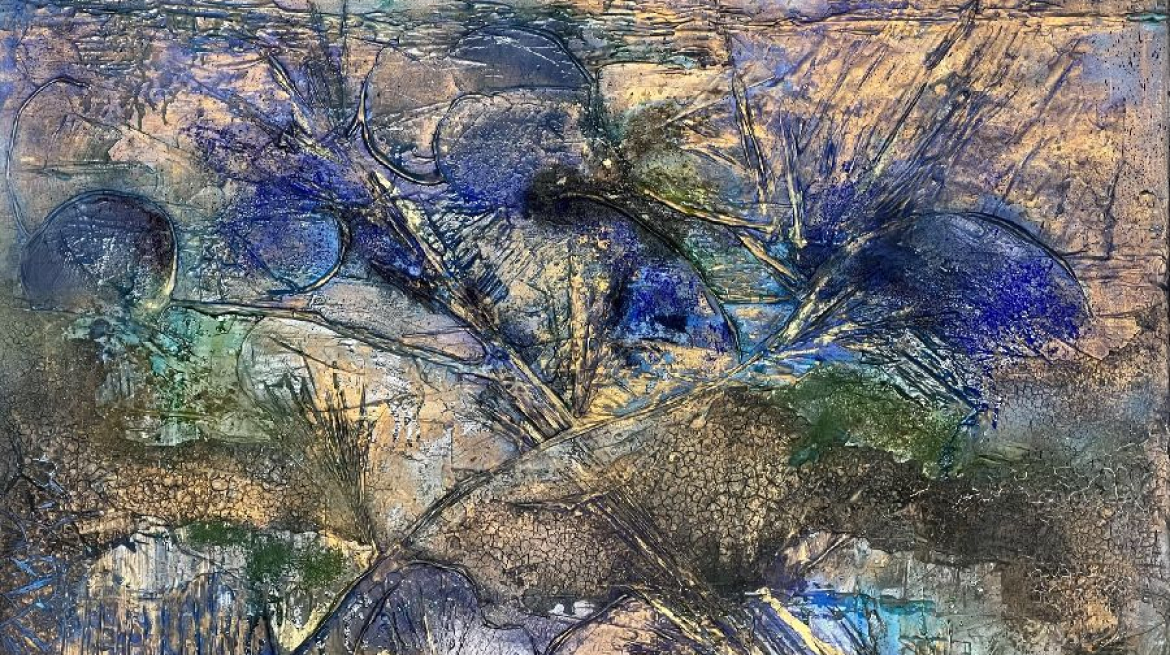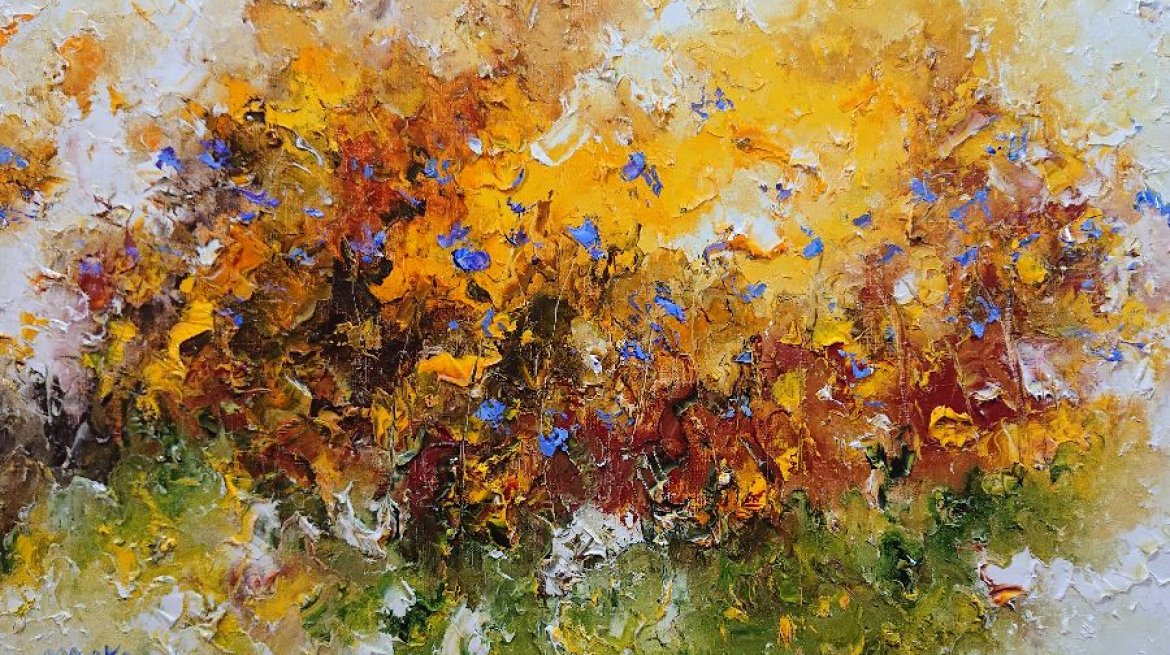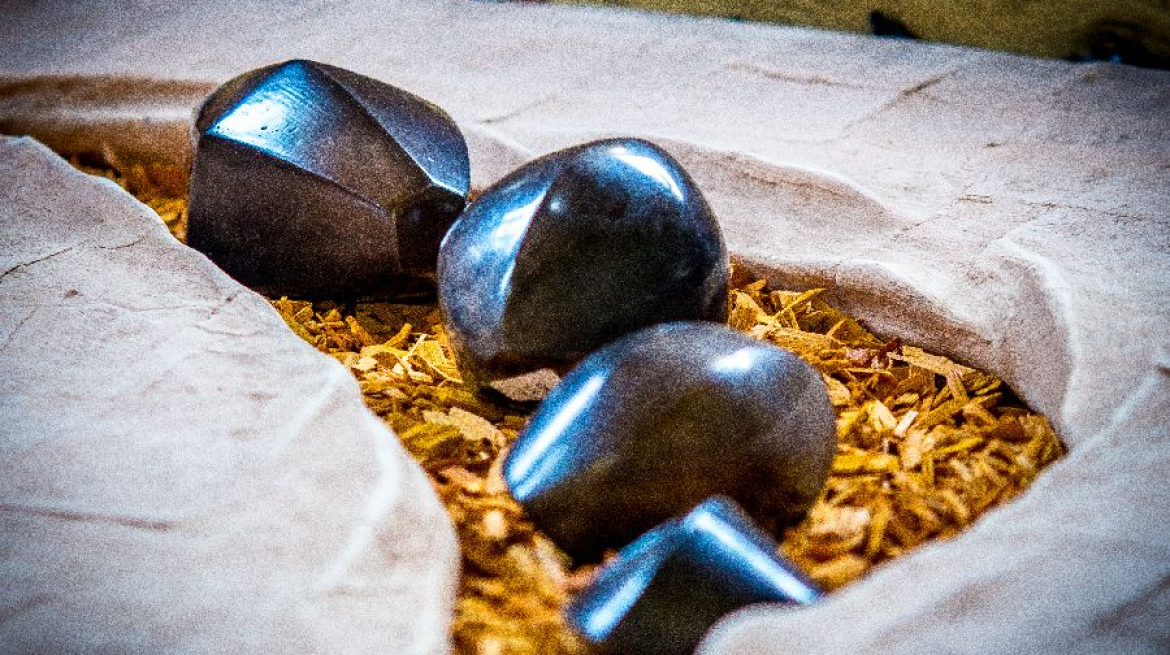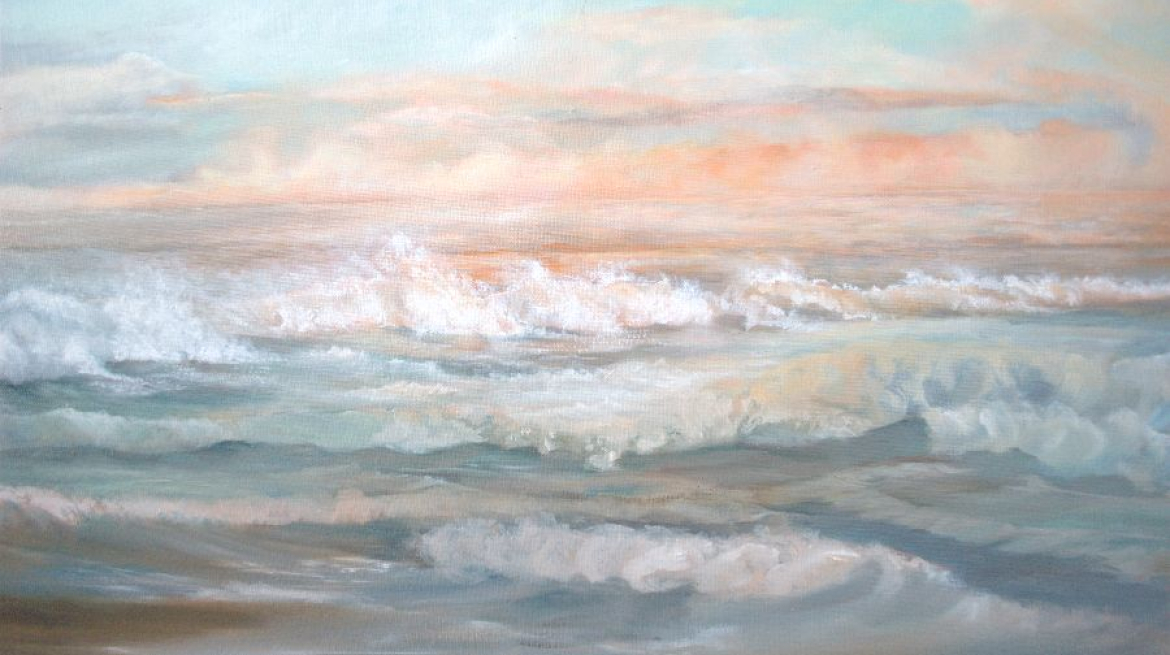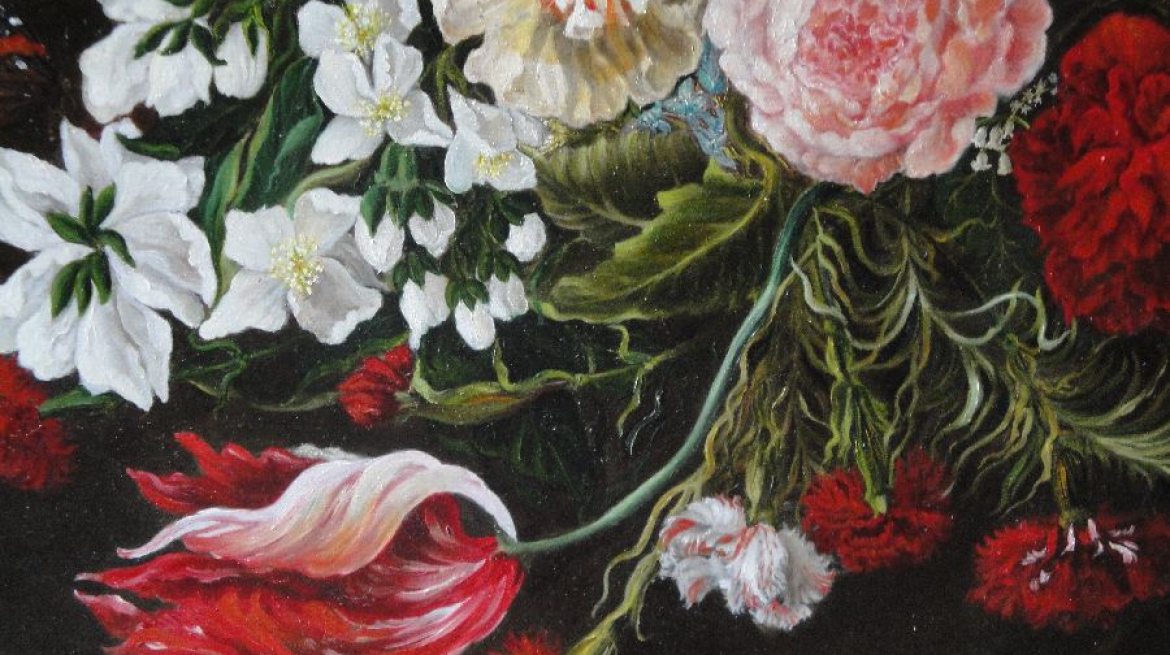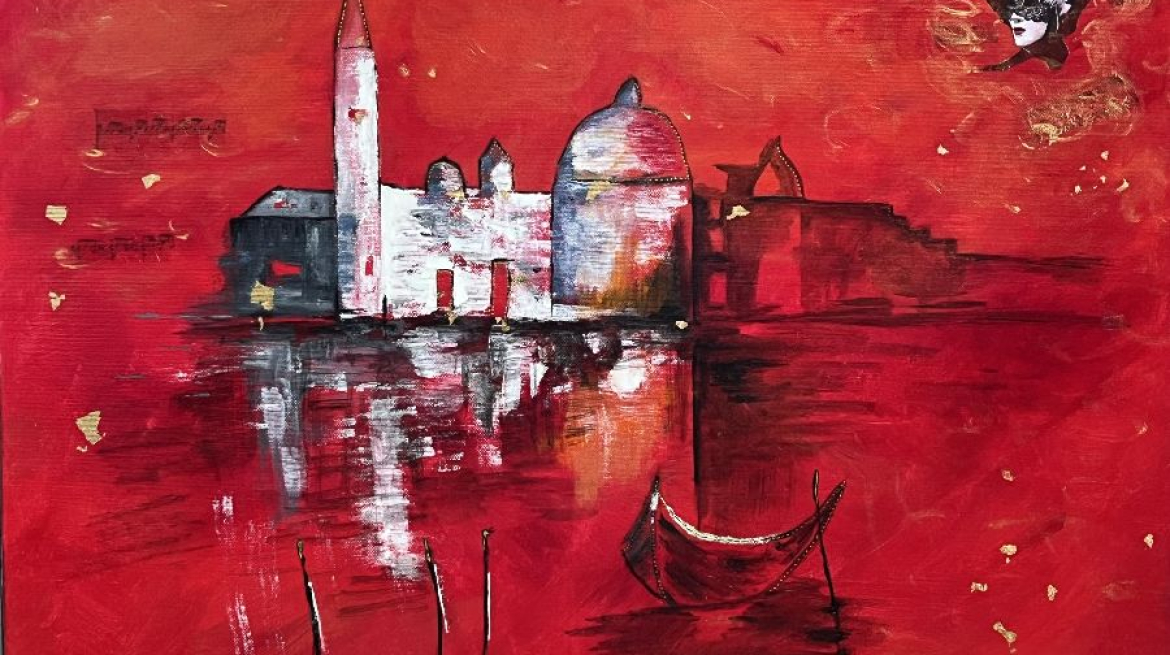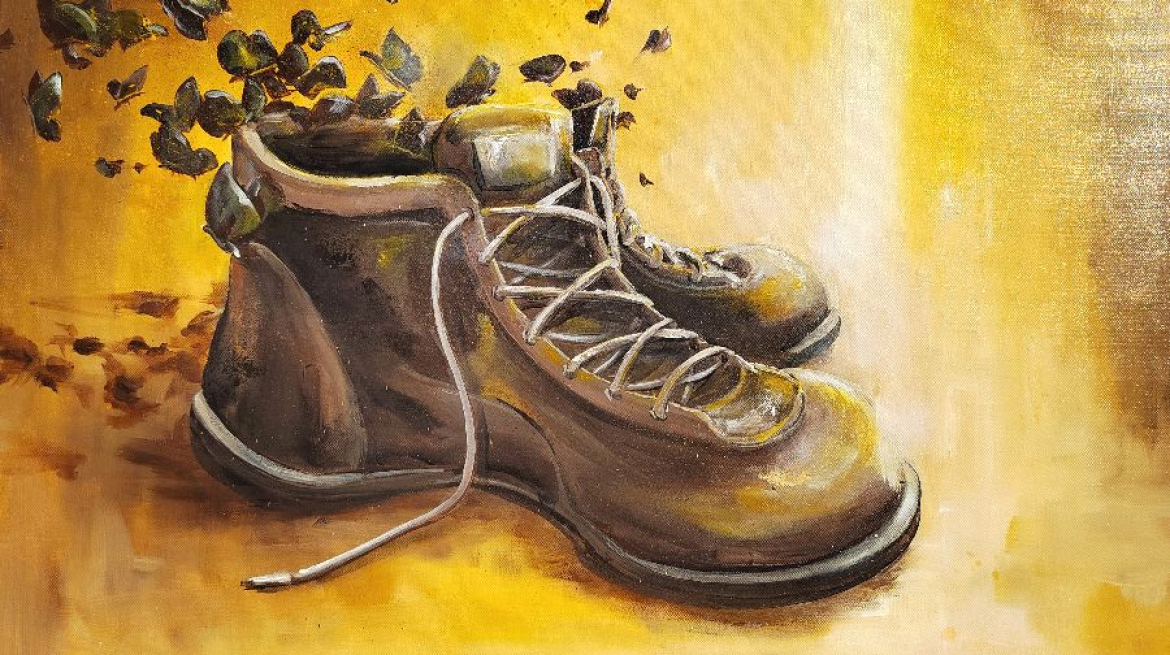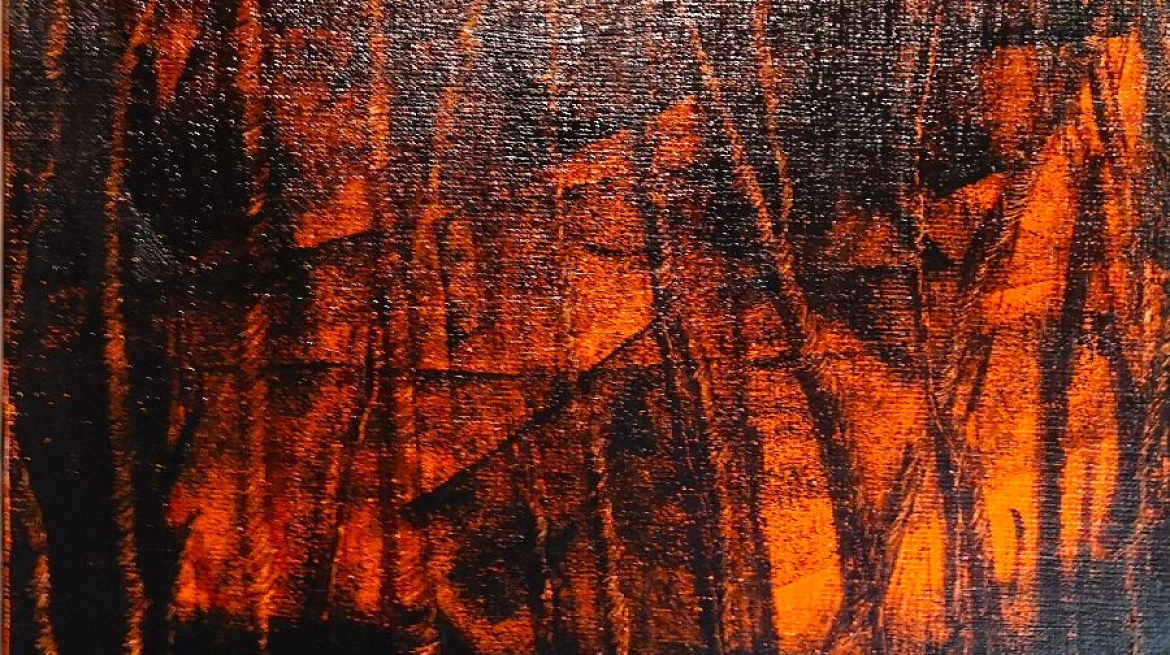Yvette Velay – Artiste Peintre
Yvette Velay – Artiste Peintre
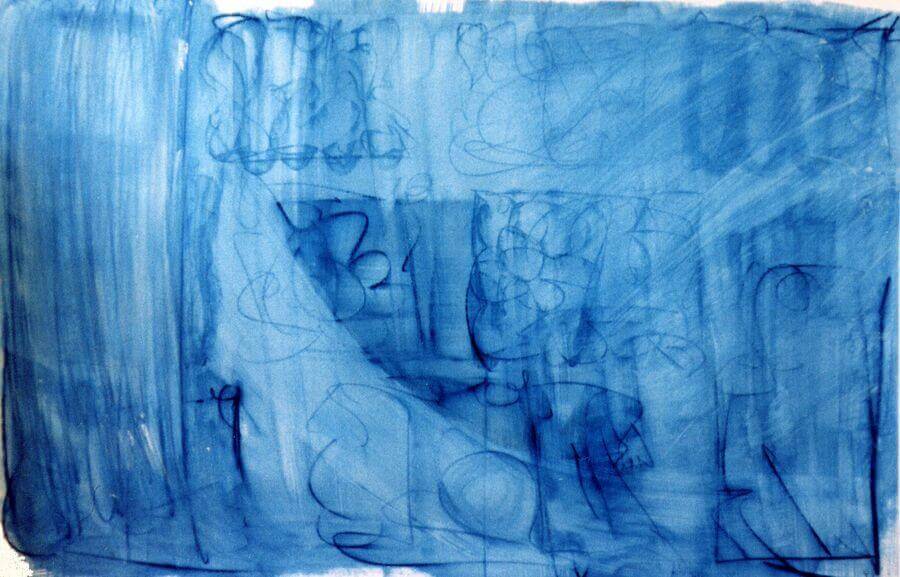
Muée par un immense désir de peindre, Yvette Velay ne peut expliquer ce qui l’a poussée vers sa destinée artistique. « Je ne sais pas, elle était là comme on a les yeux bleus ou les cheveux noirs », nous confie-t-elle. Ainsi va la vie de notre artiste depuis plus de quarante ans. Tentons d’éluder son mystère et de comprendre sa démarche artistique.
Yvette Velay n’a pas eu de peintres dans sa famille qui auraient pu l’initier. Et pourtant, en 1978 elle sort diplômée des beaux-arts de Rouen, études qu’elle complétera plus tard par une maîtrise en arts plastiques à la Sorbonne. Pour étoffer sa formation elle suivra un atelier de gravure sérigraphie dispensé par Maurice Maillard ainsi qu’un second de peinture chinoise proposé par la ville de Paris.
Ses influences sont nombreuses, aussi bien artistiques que globales. L’art roman, africain, de grands noms comme les Italiens Raphael Giovanni Bellini et Fra Angelico, mais aussi Delacroix, Ingres, Van Gogh, Matisse, Klein et tant d’autres. Elle nous dit aussi être inspirée par le silence, la nature et tout simplement par la vie.
Driven by an immense desire to paint, Yvette Velay cannot explain what pushed her towards her artistic destiny. “I don’t know, she was there as one has blue eyes or black hair”, she confides to us. Such has been the life of our artist for more than forty years. Let’s try to evade her mystery and understand her artistic approach.
Yvette Velay had no painters in her family who could have initiated her. And yet, in 1978 she graduated from the fine arts of Rouen, studies that she will complete later with a master’s degree in plastic arts at the Sorbonne. To expand her training, she will follow a silkscreen engraving workshop given by Maurice Maillard as well as a second Chinese painting workshop offered by the city of Paris.
Her influences are numerous, both artistic and global. Romanesque, African art, big names like the Italians Raphael Giovanni Bellini and Fra Angelico, Delacroix, Ingres, Van Gogh, Matisse, Klein and so many others. What is surprising is that she tells us that she is inspired by silence, nature and quite simply by life.
Afin de concrétiser ses idées, elle privilégie l’acrylique, les pastels à l’eau de Caran d’Arche, les pastels gras, mais peut tout aussi bien le faire avec autre chose qui l’aurait émerveillée. Yvette est d’une grande poésie, et cela se retrouve jusque dans les moindres détails de sa sensibilité. Quand on lui demande de décrire sa façon de faire, de nous expliquer quel est son cheminement artistique, elle nous répond en toute sincérité « ma création, c’est un peu tout. Il arrive parfois que je fasse des croquis, que j’y réfléchisse ou encore que je veuille faire quelque chose qui me vient à l’esprit, à l’instinct. » D’ailleurs, elle insiste en nous disant que cela passe par le cœur ou la tête, mais pas dans les yeux. Ainsi prenons-nous conscience qu’elle se met au service de son âme.
Le travail d’Yvette Velay est avant tout méditatif, avec ses périodes hautes et creuses. Elle se concentre, mais peut tout à fait se jeter sur son support, réaction des plus spontanées qui soient. Elle aime à citer cette phrase de Picasso qui disait « ce n’est pas moi qui choisis, c’est la peinture ; elle me fait faire tout ce qu’elle veut. » Elle ne choisit pas non, elle devient l’intermédiaire entre les matières et le médium.
Dans ses œuvres, on reconnaît l’inspiration orientale. La peintre chinoise Peng Tuan Keh Ming lui a appris la peinture chinoise ainsi que la rigueur et la dextérité. « En peinture chinoise, nous explique-t-elle, on peut charger le pinceau jusqu’à 3 nuances, et même sept pour un grand maître. On étudie les gestes du maintien du pinceau et toutes les possibilités qu’il offre. » La performance se situe alors dans l’exigence et le savoir-faire qui pousse à toujours aller plus loin. Son attirance pour la calligraphie aurait pu suivre un résonnement identique, sauf qu’elle n’a pas trouvé de maître, cependant elle en a une petite approche, nous confie-t-elle en toute modestie.
In order to concretize her ideas, she favors acrylic, water pastels from Caran d’Arche, oil pastels, but can just as well do it with something else that would have amazed her. Yvette is very poetic, and this is reflected in the smallest details of her sensitivity. When we ask her to describe her way of doing things, to explain to us what her artistic journey is, she answers us in all sincerity “my creation is a bit of everything. Sometimes I do sketches, think about them, or want to do something that comes to mind, on instinct. Moreover, she insists by telling us that it passes by the heart or the head, but not in the eyes. Thus we become aware that she puts herself at the service of her soul.
Yvette Velay’s work is above all meditative, with its high and low periods. She concentrates, but can quite throw herself on her support, the most spontaneous reaction possible. She likes to quote this sentence from Picasso who said “it’s not me who chooses, it’s the painting; it makes me do whatever it wants.” She does not choose, no, she becomes the intermediary between the materials and the medium.
In her works, we recognize the oriental inspiration. Chinese painter Peng Tuan Keh Ming taught her Chinese painting as well as rigor and dexterity. “In Chinese painting, she explains to us, you can load the brush up to 3 shades, and even seven for a great master. We study the gestures of holding the brush and all the possibilities it offers. The performance is then in the requirement and the know-how which pushes to always go further. Her attraction to calligraphy could have followed an identical resonance, except that she did not find a master, however she has a small approach to it, she confides to us in all modesty.

Quatre décennies qu’elle crée et se laisse complètement porter par sa créativité sans limites. Yvette le fait par instinct, sur des supports allant de 11 cm à 2 m. Un titre ? Pas nécessaire la plupart du temps. Un message à faire passer ? Non plus. Pour elle, ce qui compte c’est ce que chacun veuille bien comprendre avec sa propre interprétation. Alors, inlassablement avec la même passion, elle tend ses toiles, les enduit et maroufle les papiers à la chinoise. C’est ce qu’elle appelle « entrer dans le travail », comme une immersion préalable à la création.
Yvette Velay est également experte en détournement des matières. Elle se plaît à les récupérer et leur donner une seconde vie. De la palette en bois abandonnée sur un chantier à la feuille dorée d’une pâtisserie, en passant par des draps, elle déchire, trempe, contourne le véritable usage pour le réinventer. Ainsi se révèlent sous un nouveau jour des papiers froissés, des pansements de gaze, des couvercles ou encore des barquettes. Avec de la poudre de basalte et des tessons de pots de confiture, elle crée une œuvre qui symbolise la fragilité. Le spectateur sera irrémédiablement séduit par toutes ces mises en scène à la fois audacieuses et pleines de surprises.
Four decades that she creates and lets herself be completely carried away by her limitless creativity. Yvette does it by instinct, on supports ranging from 11 cm to 2 m. A title? Not necessary most of the time. A message to convey? No more. For her, what matters is what everyone wants to understand with their own interpretation. So, tirelessly with the same passion, she stretches her canvases, coats them, maroufles papers the Chinese way if necessary. This is what she calls “entering the work”, like an immersion prior to creation.
Yvette Velay is also an expert in the diversion of materials. She likes to collect its and give its a second life. From the wooden pallet abandoned on a construction site to the golden leaf of a pastry shop, passing through sheets, she tears, soaks, bypasses the real use to reinvent it. Thus are revealed in a new light crumpled papers, gauze bandages, lids or even trays. With basalt powder and shards of jam jars, she creates a work that symbolizes fragility. The spectator will be irremediably seduced by all these stagings that are both audacious and full of surprises.
Vous avez aimé cet article ? Partagez-le
A lire
Catégories
Catégories
- Artistes du monde (631)
- Bio et terroir (1)
- Découverte (16)
- Metiers d'art (47)
- Nouvelles Tendances (26)
